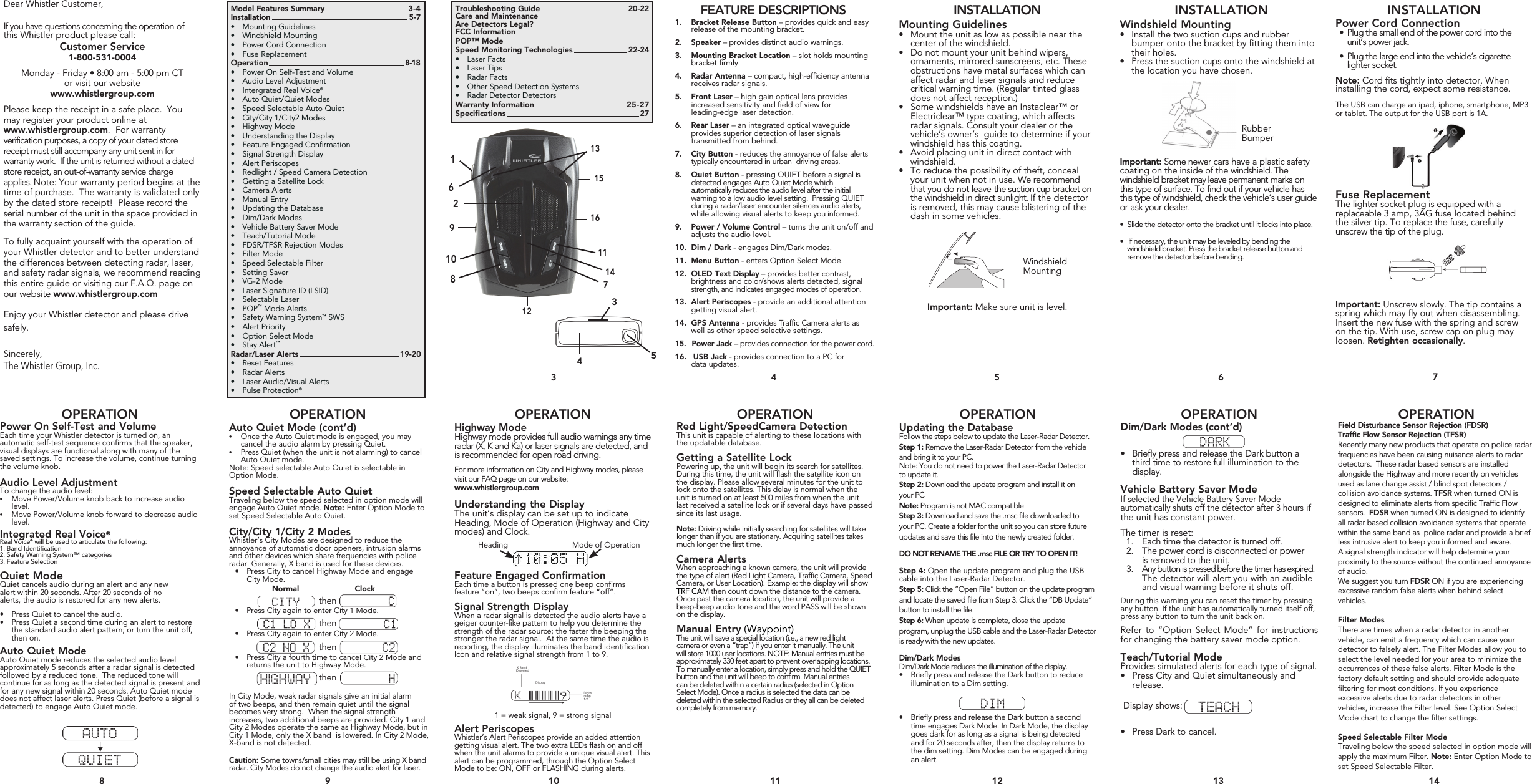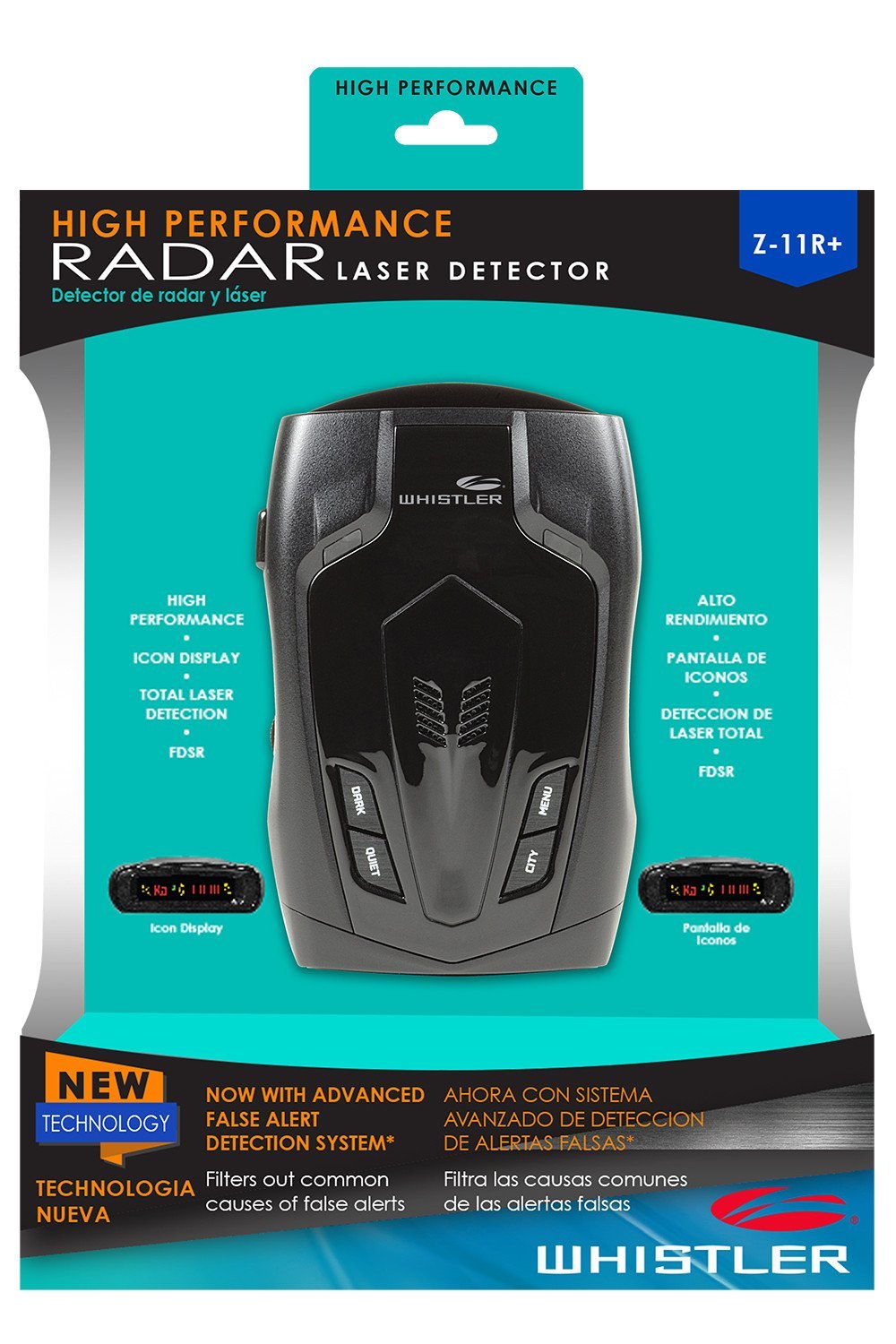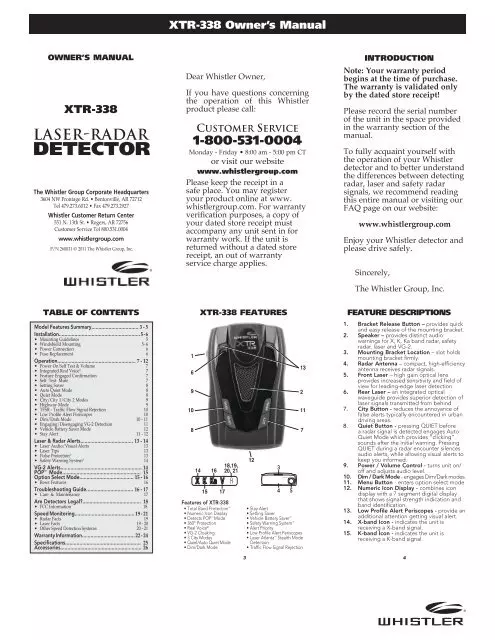The Whistler Radar Detector Manual provides instructions for setting up and using the radar detector. It includes important safety information and guidelines for optimal performance.
When it comes to maximizing the effectiveness of your Whistler radar detector, following the manual is crucial. Whether you’re a new user or looking to upgrade your knowledge, understanding the manual is essential. From installation to understanding the different alerts, the manual provides comprehensive guidance.
Additionally, it offers troubleshooting tips for common issues, ensuring smooth operation. With the information provided in the manual, users can make the most of their radar detector’s capabilities while staying safe on the road. Moreover, familiarizing yourself with the manual ensures efficient usage of the device and maximizes its functionality. Following the Whistler Radar Detector Manual will not only enhance the device’s performance but also contribute to safer and more informed driving.
Understanding Radar Technology
When it comes to driving, radar detectors have become an invaluable tool for many drivers. While they are often used to detect speed traps set up by law enforcement, it’s important to understand the basics of radar technology to effectively utilize these devices. This post will delve into the inner workings of radar detectors, focusing on how they work and the different types of radar signals they can detect.
How Radar Detectors Work
Radar detectors operate by scanning for the radio signals emitted by police radar guns. These signals bounce off vehicles and return to the radar gun, allowing law enforcement to measure their speed. Detectors work by picking up these signals and alerting drivers to their presence. This gives drivers a chance to adjust their speed and avoid potential speeding tickets.
Modern radar detectors utilize sophisticated technology to differentiate between radar signals and other false alarms such as automatic doors or blind-spot monitoring systems found in newer vehicles. Some detectors also incorporate GPS technology to provide real-time updates on known speed traps and red-light cameras.
Types Of Radar Signals
There are different types of radar signals that a radar detector can pick up, including X-band, K-band, and Ka-band. These bands refer to the frequency at which the radar gun operates, with Ka-band being the most common among law enforcement agencies due to its higher accuracy and ability to target specific vehicles.
Understanding the various types of radar signals is crucial for drivers as it allows them to tailor their radar detector settings to the specific signals that are prevalent in their region. By having a comprehensive understanding of radar technology, drivers can maximize the effectiveness of their radar detectors and make informed decisions while on the road.
Choosing The Right Whistler Radar Detector Model
When it comes to choosing a radar detector, Whistler is a trusted brand known for its reliable and high-quality products. However, with a variety of radar detector models available, it can be overwhelming to select the one that best suits your needs. To help you make an informed decision, consider the factors and features outlined below.
Factors To Consider
- Price: Determine your budget for a radar detector, keeping in mind that higher-priced models usually offer more advanced features.
- Location: Consider where you primarily drive as radar detection laws and enforcement vary by region. Ensure the model you choose is compatible with the laws in your area.
- Range: Look for a Whistler radar detector with a long detection range to provide ample time to react to radar signals.
- Mounting Options: Decide whether you prefer a radar detector that mounts on your windshield, dashboard, or rearview mirror for convenient and secure placement.
- Alert Systems: Check if the radar detector offers audio, visual, or both types of alerts. Some models also have voice alerts and GPS-based technology to provide more accurate alerts.
- Compatibility: If you use a smartphone extensively, consider a radar detector that is compatible with your device, providing features like app integration and customized settings.
Features To Look For
- 360-Degree Protection: Choose a Whistler radar detector that provides full 360-degree coverage to detect signals from all directions.
- Multiple Radar Bands: Look for a model that detects various radar bands, including X, K, Ka, and laser, to ensure comprehensive protection against different speed measurement devices.
- Filtering Options: Opt for a radar detector that offers filtering options to reduce false alerts, such as those triggered by automatic door openers or other radar detectors.
- Alert Priority: Consider a model with an alert priority feature that allows you to prioritize certain signals, such as those from law enforcement, over others to avoid missing important alerts.
- Auto-Mute Function: Look for a radar detector that automatically mutes or lowers the volume of alerts after the initial warning to minimize distractions while driving.
- Display Features: Check if the radar detector has a clear and easy-to-read display that shows relevant information like signal strength, radar band, and current speed.
By taking these factors and features into account, you can confidently choose the right Whistler radar detector model that provides reliable radar detection and enhances your driving experience. Remember to select a model that aligns with your specific requirements and preferences for the utmost effectiveness on the road.
Installation And Setup
Installing and setting up your Whistler Radar Detector is the first step in ensuring a seamless driving experience. In this section, we will guide you through the process, providing clear instructions on how to mount the detector, program it, and calibrate it for optimal performance.
Mounting The Detector
Properly mounting your radar detector is crucial for it to function effectively. Follow these steps to securely attach your Whistler Radar Detector:
- Choose an optimal location: Consider a spot where the detector has an unobstructed view of the road and is easily accessible to you.
- Prepare the mounting bracket: Attach the mounting bracket to the windshield using the suction cups provided.
- Connect the detector to the bracket: Place the detector onto the bracket and ensure a snug fit.
- Position the detector: Adjust the angle of the detector to ensure it is facing the road ahead.
- Secure the wiring: Tuck the detector’s power cord neatly along the windshield and dashboard to avoid any distractions or interference.
Programming And Calibration
To optimize your Whistler Radar Detector’s performance, you need to program and calibrate it to suit your driving habits and preferences. Follow these simple steps:
- Power on the detector: Connect the power cord to a suitable power source and turn on the detector.
- Enter programming mode: Access the programming menu by following the instructions provided in the user manual.
- Adjust sensitivity levels: Customize the sensitivity settings to ensure the detector can effectively detect radar signals while minimizing false alerts.
- Set filtering options: Configure the filtering options to distinguish between legitimate police radar signals and other false sources.
- Adjust audio and visual alerts: Tailor the alert tones and display settings to your preference, allowing for easy understanding and quick reactions on the road.
- Save your settings: Once you have made all necessary adjustments, save your programming changes to ensure they are retained for future use.
Calibrating and programming your Whistler Radar Detector ensures that you receive accurate and reliable warnings, enhancing your overall driving experience.

Credit: drprietoalonso.com
Optimizing Detector Performance
Optimizing the performance of your Whistler radar detector is essential for ensuring its effectiveness in detecting radar signals and minimizing false alerts. By following the proper techniques, you can maximize the range of detection while reducing the likelihood of receiving false alerts. In this section, we will explore the key strategies for optimizing the performance of your radar detector to enhance its functionality and accuracy.
Maximizing Range
To maximize the range of your Whistler radar detector, it is crucial to understand the factors that can impact its detection capabilities. Positioning plays a significant role in maximizing range. Mount the detector in a location that provides a clear line of sight to the road ahead, preferably high on the windshield for optimal coverage.
Regularly updating the firmware of your radar detector is also essential for maximizing its range. Firmware updates often include improvements in signal detection algorithms, enhancing the device’s ability to detect radar signals at longer distances.
Sensitivity settings can be adjusted to maximize range without increasing the likelihood of false alerts. Experiment with the sensitivity settings to find the optimal balance between range and false alert reduction. Testing the detector in various driving conditions can help you determine the most effective sensitivity settings for different scenarios.
Minimizing False Alerts
Minimizing false alerts is crucial to ensure that your radar detector only alerts you to legitimate threats. GPS lockout feature can be a valuable tool for reducing false alerts in areas where non-threatening signals are commonly encountered, such as automatic door openers and motion sensors. Utilize this feature to program the detector to ignore known false sources of signals.
Another strategy for minimizing false alerts is to be mindful of your surroundings and identify common sources of false signals. For example, stationary radar sources and roadside speed signs can trigger false alerts. Understanding the typical locations of these sources can help you differentiate between genuine threats and false signals.
Advanced Tips And Tricks
Unlock the full potential of your Whistler Radar Detector by mastering the Advanced Tips and Tricks featured in the manual.
Customizing Settings
- Access the customization menu easily using the designated button combinations.
- Adjust the sensitivity levels according to your driving environment.
- Enable or disable specific bands to eliminate false alerts.
- Personalize alert tones and volume for a more tailored experience.
Understanding Alerts
- Learn to differentiate between various alert types such as X, K, Ka, and laser.
- Utilize the signal strength indicator to gauge the proximity of threats.
- Recognize the different frequencies of police radar guns for enhanced alert interpretation.
Credit: fccid.io
Maintenance And Troubleshooting
The Whistler Radar Detector Manual provides comprehensive information on maintenance and troubleshooting techniques for optimal performance. Understand how to effectively maintain and resolve issues with your radar detector to ensure accurate and reliable alerts on the road.
Maintenance and Troubleshooting:Cleaning And Care
Regularly clean your Whistler Radar Detector with a soft cloth and mild detergent. Avoid using harsh chemicals, as they may damage the device’s sensitive sensors. Store the detector in a cool, dry place away from direct sunlight to prolong its lifespan.Common Issues And Solutions
Issue: No Power – Solution: Check the power cable connection and replace if damaged. Issue: False Alerts – Solution: Adjust the sensitivity settings or update the firmware. Issue: Poor Performance – Solution: Ensure the detector is mounted correctly and free from obstructions. Remember to refer to the Whistler Radar Detector Manual for detailed troubleshooting steps.
Credit: whistlergroup.com
Frequently Asked Questions
What Does The P Stand For On My Whistler Radar Detector?
The “P” on your Whistler radar detector stands for “Pulse. ” It indicates the pulse mode setting for detecting radar signals.
How Do You Reset A Whistler Radar?
To reset a Whistler radar, turn it off, press and hold the power button for 5 seconds. Release the button and turn the radar back on.
What Do The Symbols On A Radar Detector Mean?
The symbols on a radar detector indicate different types of radar signals. Common symbols include X, K, Ka, and laser alerts. Each symbol corresponds to a specific type of radar used by law enforcement.
What Is The Best Setting For Whistler?
The best setting for Whistler is highly subjective and depends on individual preferences. Some popular options include winter sports like skiing and snowboarding, summer activities such as hiking and mountain biking, and year-round attractions like restaurants and shopping. Ultimately, the best setting for Whistler is whatever allows you to enjoy the activities and experiences that interest you the most.
Conclusion
In light of the information presented, the Whistler radar detector manual serves as an essential resource for maximizing the functionality and efficiency of your radar detector. With clear instructions and expert tips, users can enhance their driving experience and stay ahead of potential threats on the road.
Trust the Whistler radar detector manual to unlock peak performance and ensure a safe journey.



